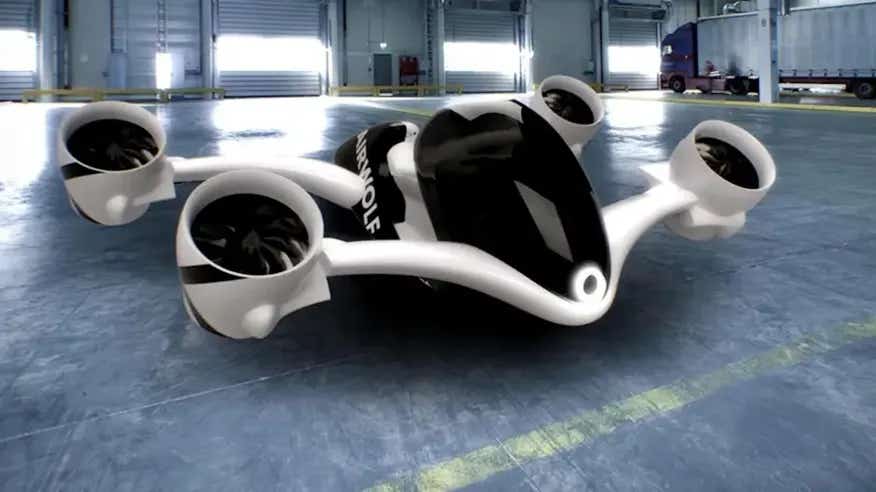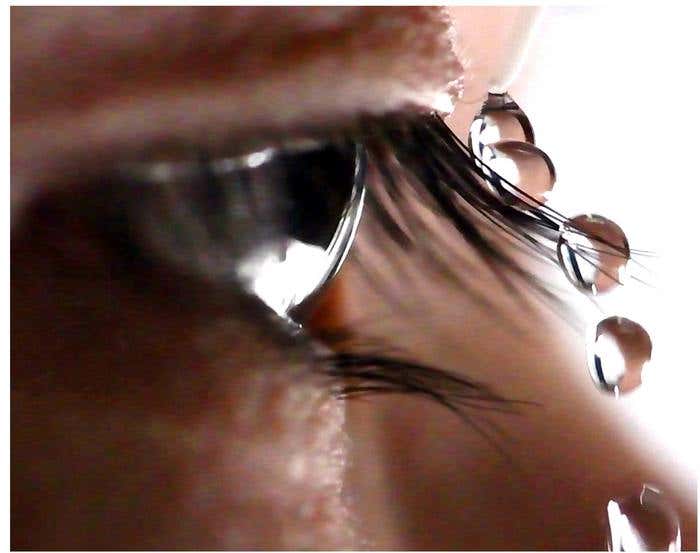Airwolf takes off: The 140 mph flying motorcycle is here
With its advanced propulsion system, Airwolf leverages individually tilting ducted fan technology to achieve both hovering and cruising capabilities

The Czech company UDX has unveiled an innovative electric vertical take-off and landing (eVTOL) prototype known as Airwolf. (CREDIT: UDX)
Czech company UDX has introduced a groundbreaking electric vertical take-off and landing (evTOL) prototype called Airwolf. This innovative hoverbike is engineered for speed, efficiency, and agility. With its advanced propulsion system, Airwolf leverages individually tilting ducted fan technology to achieve both hovering and cruising capabilities at speeds of up to 142 miles per hour.
What sets Airwolf apart is its impressive power and maneuverability. Generating 430 horsepower, it is described as having “hummingbird-like” agility. The hoverbike features four independently moving fan units, which help reduce strain on its battery system, ultimately enhancing its overall flight range and efficiency.
Despite its cutting-edge design, UDX has identified key areas for improvement since unveiling the prototype. One significant limitation is its flight duration—Airwolf can only stay airborne for 25 minutes before requiring a recharge. This restriction poses a challenge for practical use, particularly for longer commutes or extended flight applications.
In terms of operation, piloting an Airwolf in the United States requires specific training. To legally fly the prototype, users must complete 20 hours of flight training to obtain a sport pilot license. This requirement ensures that operators are adequately trained to handle the hoverbike’s unique flight dynamics.
Beyond the training requirements, affordability is another hurdle. With a price tag of $320,000, Airwolf remains an expensive investment. Captain Electro, an expert in the field, highlighted this high cost as a potential barrier to widespread adoption, limiting access to only those who can afford such advanced personal transportation.
The technology behind evTOLs like Airwolf offers substantial benefits for urban mobility. These aircraft can significantly reduce traffic congestion by providing an alternative to traditional ground transportation. Unlike fossil fuel-powered vehicles, their electric propulsion system produces zero direct emissions, making them an environmentally friendly option.
Related Stories
Additionally, evTOLs generate lower noise levels compared to helicopters and other conventional aircraft, making them more suitable for urban settings. With the potential for safer and cleaner transportation, Airwolf and similar innovations could shape the future of personal and commercial aviation.
Transportation pollution is a major issue affecting both health and the environment. For example, residents near the U.S.-Mexico border in El Paso face severe health problems from air pollution caused by idling vehicles, especially transport trucks. This pollution has been linked to increased rates of asthma, heart disease, Type 2 diabetes, and mental health challenges.
The rise of electric vehicles (EVs) is seen as a solution to reduce transportation-related pollution. A study from the University of Southern California found that for every additional 20 zero-emission vehicles per 1,000 people, there was a noticeable drop in asthma-related emergency visits. This demonstrates that as more people switch to EVs, air quality significantly improves.
UDX's Airwolf has also sparked innovation from other companies. For instance, Lazareth's Moto Volante, a semi-functioning road-and-air jet-cycle, and the Air One, developed by the Israeli company Air, are notable examples of this trend.
The federal government's Inflation Reduction Act supports the shift to sustainable transportation, aiming to prevent up to 100,000 asthma attacks annually by 2030 and avoid nearly 3,900 premature deaths. This legislation highlights the importance of developments in responsible travel.
"Now this is what an evTOL should look like," remarked one commenter on the Airwolf prototype announcement.
With such advancements, the sky is truly the limit for the future of transportation.
Other personal flying machines
Several other personal flying aircraft have been highlighted by The Brighter Side of News, showcasing advancements in electric vertical takeoff and landing (eVTOL) technology.
Jetson ONE – This personal aircraft is an ultralight eVTOL that can reach speeds of 63 mph and fly at an altitude of 1,500 feet. Designed for ease of use, it does not require a pilot's license, and users can control it with intuitive joystick commands.
The Jetson ONE can fly for about 20 minutes on a single charge, making it ideal for short trips. It's geared toward making personal flight accessible to more people, aiming to democratize air travel by 2024.
CruiseUp - CruiseUp introduces a new class of aircraft with CycloRotors as its electric propulsion system, ensuring environmental safety and passenger protection. Unlike traditional rotors and propellers, the CycloRotors' moving parts are enclosed, and the unique configuration of CruiseUp shields the passenger cabin.
With six CycloRotors, CruiseUp can reach a top speed of 150 km/h and has a range of 100 km, ideal for most megacities and their suburbs within a 20 km radius.
AIR ONE - Created by AIR, the company's inaugural vehicle is an all-electric two-seater eVTOL that offers a range of 110 miles on a single charge at speeds up to 155 miles per hour, with a flight time of one hour.
AIR ONE prioritizes everyday practicality for consumers with collapsible wings for easy parking and its ability to take off from or land on any flat surface.
ZEVA Aero Zero – A prototype developed by ZEVA Aero in collaboration with Washington State University, the ZEVA Zero is a single-passenger eVTOL designed for emergency services. It has a top speed of 160 mph and a range of 50 miles.
It takes off vertically and then tilts forward for efficient flight, resembling a futuristic hovercraft. This vehicle is also expected to hit the market soon.
Volocopter VoloCity – Targeting urban air mobility, this electric air taxi was set to launch in Paris by the end of 2024. The VoloCity had a range of 22 miles and focused on offering quiet, emission-free transportation within cities. It planned to offer routes connecting central Paris to airports, providing a sustainable solution for urban transportation. Unfortunately, the company filed for insolvency while looking for further investment at the end of 2024.
These aircraft represent significant steps toward the future of personal aviation, promising to reduce urban congestion, offer sustainable transportation, and make air travel more accessible.
Note: Materials provided above by the The Brighter Side of News. Content may be edited for style and length.
Like these kind of feel good stories? Get the Brighter Side of News' newsletter.
Joseph Shavit
Head Science News Writer | Communicating Innovation & Discovery
Based in Los Angeles, Joseph Shavit is an accomplished science journalist, head science news writer and co-founder at The Brighter Side of News, where he translates cutting-edge discoveries into compelling stories for a broad audience. With a strong background spanning science, business, product management, media leadership, and entrepreneurship, Joseph brings a unique perspective to science communication. His expertise allows him to uncover the intersection of technological advancements and market potential, shedding light on how groundbreaking research evolves into transformative products and industries.



